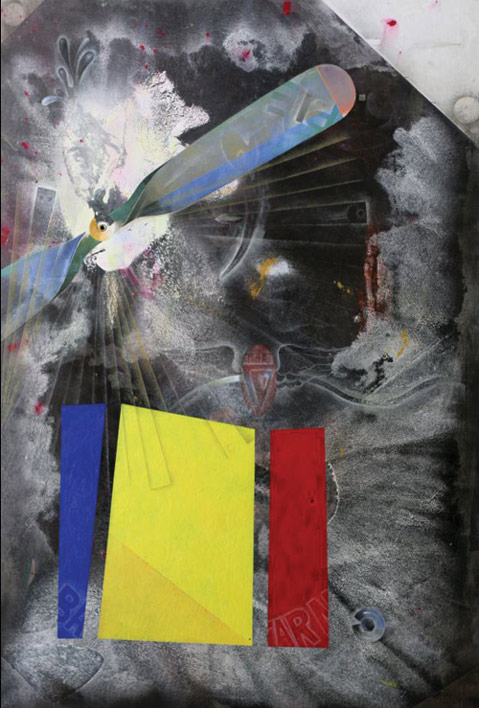Rafael Perea de la Cabada at Westmont
Art Seen: Retrospective of Santa Barbara Artist in New Museum
HOME IS WHERE THE HEART IS: The new Westmont Ridley-Tree Museum of Art gives the city another exciting space for mounting important public exhibitions, and one could not ask for a better introduction to its potential than the Rafael Perea de la Cabada show Alien Heartland. Cabada’s bold, imaginative work in multiple media has never looked better, or more complete, than it does in this handsome room, and in this context; it’s currently paired with Mexican Prints: Selections from the Gil Garcia and Marti Correa de Garcia Collection. Fortunately, the Cabada exhibit will live on after that show closes on Saturday, March 31, as the museum has put together a great catalogue that includes an introduction by Judy Larson of Westmont and an essay by Peter Frank, along with several dozen color plates. Cabada is a central figure in our art community here in Santa Barbara, and his is a story and an oeuvre that we should all both know and celebrate.

Cabada, who teaches art and design at Santa Barbara City College, has mastered techniques ranging from drypoint etching to abstract collage, spray painting to sculpture. His art radiates this facility with every kind of mark, gesture, image, and process, yet Cabada’s work is always recognizably his own. He fuses California street art with a sophisticated take on relational aesthetics, and immerses it in his heritage, which is the philosophy and practice of Mexican modernism. That’s why the adjacent show of prints by modern Mexican masters illuminates his work so effectively — he lives and breathes the lessons not only of Rivera and Siqueiros, but of more abstract precursors such as Gunter Gerzso.
The “heartland” of the title refers to a place where one feels complete and part of a healthy community but without necessarily implying that one was born there, as in the more nationalist notion of the “homeland.” The modifier “alien” all but erases this tender notion, squatting over it and obscuring it with connotations of otherness, peril, and fugitive status. This is, of course, an apt description of day-to-day life for many Mexicans living in the United States, and although Cabada is well established here himself, he never loses sight of this aspect of our collective reality. Indeed, like his great Mexican precursors, Cabada never forgets who or what he is, politically or aesthetically. Take, for example, the giant and magical painting called “15 Minutes of Fame” from 2004. It’s an image of the Academy Awards’ Oscar trophy, but it’s also, with its witty row of black plastic canisters across the top, an homage to Jasper Johns and a witty swipe at our culture’s mutually reinforcing addictions to television and snacks.
Among the phrases in Cabada’s visual language, one stands out as a particularly interesting revision of the Mexican modernist tradition. His take on the grietas of Gerzso, which are a kind of hieroglyphic personification device, comes in the form of a grommet, which turns up to break the surface of many of Cabada’s most ambitious paintings. These punctual little man-made holes often read as a kind of living presence, as though the artist has an agreement, “let grommet equal human.” It’s a great, thought-provoking move, and its just one of the things that Cabada gets right, no matter what the scale or medium.
Outside the large window at the far end of the gallery stands the sculpture “LogOut” (2006), and with its monumentality and sense of place, it provides a thrilling counterpoint to all the work hanging on the walls inside. Like Cabada’s great performance piece of 2004, “The Drawing Room,” in which he lived and worked in the gallery of the Santa Barbara Contemporary Arts Forum, “LogOut” successfully crosses over the border between the artist’s personal heartland and the public space in which his work appears.



